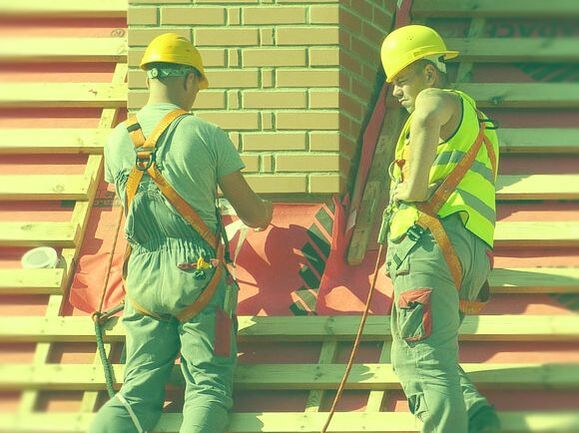|
While all falls are preventable, they continue to be the leading cause of fatalities in the workplace. As OSHA continues to put an emphasis on fall prevention, one of the best ways to prevent falls is a Personal Fall Arrest System (PFAS). Let’s take a look at the parts of a PFAS and some of the safety points of use.
PFAS Components OSHA defines a PFAS as a system used to arrest an employee in a fall from a working level. A PFAS system includes an anchor, connector, body harness, and sometimes additional equipment such as lifelines and shock absorbers. Here is the purpose of each component: Anchor Anchor points are where the PFAS begins and acts as the point to suspend the load during a fall. Anchor points are required to be independent from any other type of support. All anchors must be able to support 5,000lbs per employee, maintain a safety factor of two, or designed and installed by a professional. Connector Connectors link the anchor point to the body harness, usually in the form of a lanyard or self-retracting device. Connectors must be fitted with locking snap hooks or d-rings and need to be limited in length so an employee cannot fall to a lower level or more than 6ft. Body Harness A full body harness is the component that helps distribute the impact of the fall to the lower half of the body. Harnesses need to be fitted for each employee and inspected before each use. Any signs of wear, tears, or faulty clips must be reported and the harness removed from use. Additional Equipment Extra equipment such as lifelines can be helpful by increasing the area of work for employees allowing for more movement. Shock absorbers are a common addition to lanyards and lifelines as they reduce fall loads by up to 50%. Safety Points for Use Before using your PFAS, here are some safety tips to remember and follow:
When it comes to PFAS, inspecting equipment before use, limiting the fall distance, and having a plan in place to rescue a fallen worker are just as important to knowing your components and how to use them properly. To keep the conversation going, download the PFAS toolbox talk (TBT) or comment below.
0 Comments
|
AuthorSTAC Admin Categories
All
Archives
July 2024
|


 RSS Feed
RSS Feed